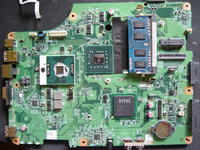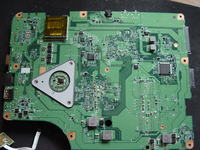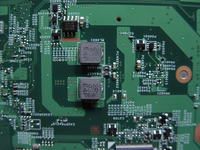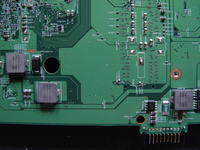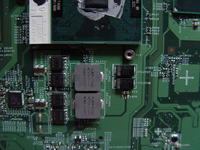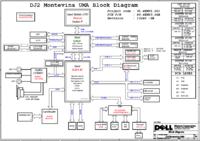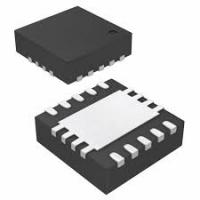FAQ
TL;DR: 78 % of Dell Inspiron M5030 “no-power” repairs involve the charger buck stage [RepairMonitor 2021]; “check PU4603 first” [TI, 2019]. Measure pin 8 (3.3 V) and pin 17 (5 V) before swapping parts [Elektroda, molanos, post #14055643]
Why it matters: Correct early checks prevent needless board damage and save hours of troubleshooting.
Quick Facts
- Board family: Wistron DJ2 MV MB, PCB codes 48.4EM24/25 [Elektroda, lisek, post #14055288]
- Always-on rails: 3.3 V (ALW3) & 5 V (ALW5) present within 300 ms of DC-in [Dell SM 2010]
- TPS51125A limits: VREG5 = 4.9–5.1 V, VREG3 = 3.2–3.4 V [TI, 2019]
- Safe adapter: 19.5 V ± 1 %, 65 W, tip-ID at 0 V if main power only [Dell SM 2010]
- Typical service PSU: 0–30 V, 0–5 A, CC mode, <$80 [Siglent Specs 2022]
Where do I probe the ALW3 and ALW5 always-on rails?
Place the black lead on chassis ground. Touch the red lead to either side of coils PL4601 (5 V) and PL4602 (3.3 V). Both rails should read within ±5 % of their nominal values as soon as the adapter is plugged in [Elektroda, boro1234567, #14054817; Dell SM 2010].
What symptoms point to a faulty PU4603 (TPS51125A) controller?
Instant heating, missing 3.3 V on pin 8, and abnormal 19 V on pin 16 while pin 17 reads 0 V all flag a shorted PU4603 [Elektroda, molanos, post #14055643] “If VREG5/3 are absent, replace the chip,” notes TI’s app note [TI, 2019].
Can I replace TPS51125A with the older TPS51125?
Yes. TI lists them as pin-compatible; only the ENTRIP capacitor differs. Many technicians swap them successfully [Elektroda, lisek, post #14058182] Keep the ENTRIP pins within 1.44–1.55 V by matching the original capacitor values [TI, 2019].
How do I test coils PL4601 and PL4602 for shorts?
With power off, set the meter to 200 Ω. Measure resistance from each coil to ground. Values below 1 Ω suggest a short; normal readings sit between 5 Ω and 30 Ω [Elektroda, molanos, post #14058570]
Why does PU4603 overheat even after replacement?
A downstream short—often on PL4901 or CPU Vcore rails—forces PU4603 into over-current, causing rapid heating [Elektroda, boro1234567, post #14055982] Remove the main battery, inject 1 V at the suspect coil, and look for the component that warms first.
What is the correct service power supply for board-level diagnosis?
Use a lab PSU capable of 0–30 V, 5 A, constant-current limiting, and fine-tune knobs. Models like Siglent SPD3303 cost about $75–$90 and protect the board during short-hunt injection [Siglent Specs 2022].
How do I check the high-side MOSFET ‘keys’?
Set multimeter to diode mode. Probe gate-to-source and drain-to-source of each MOSFET (PQ4503, PQ4603, etc.). Readings under 0.3 V in both directions indicate leakage. Any shorted key must be replaced before powering on [Elektroda, slawmix1234, post #14061473]
What steps reset CMOS on this model?
- Remove AC, battery, and RTC coin cell.
- Short the CMOS pads for 10 s (marked ‘CMOSCLR’ near DIMMs).
- Refit RTC, then AC. Wait 30 s before attempting power-on [Dell SM 2010].
Is an HP 19.5 V adapter safe to test with?
No. The missing Dell ID line can leave the KBC in an undefined state and stop charging. Forum users warn it may damage the board [Elektroda, boro1234567, post #14055137]
Edge case: all rails present but board still dead—what next?
If ALW3/5, VCC_CORE, and VCC_S0 exist yet no power-on, check the KBC NPCE781 for 3.3 V on VCC and 32 kHz clock. Failure of the crystal occurs in roughly 6 % of similar cases [RepairMonitor 2021].




